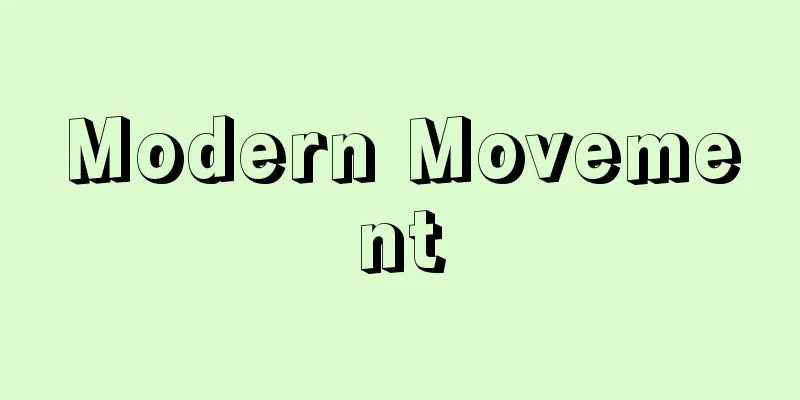Mind-body problem - shinshinmondai (English spelling) mind-body problem English

|
How the mind and body are connected within humans to make up a person, and how they affect each other is one of the ancient problems in philosophy. In ancient and medieval times, when the mind was thought to give life to matter, the main question was how the mind and body were connected to form a human being. While there was the Platonic position that considered the mind to be independent, there was the Aristotelian position that the mind and body are two aspects (form and matter) that make up the substance of a human being. In the latter position, the mind was considered to be a principle (form) that acts on the material (matter) of matter, transforming it into a human being that behaves in a special way (living, taking in nutrients, feeling, thinking) that is not seen in mere matter (Aristotle, Thomas Aquinas). The latter view became dominant in the Middle Ages. On the other hand, since the early modern period, there has been much discussion of the mechanisms by which the mind and body influence each other. The views on this subject can be broadly divided into monism and dualism. Monism is the position that only one of mind and body exists, and is divided into (1) "materialism" (Hobbes, La Mettrie, modern physiology, etc.), which holds that only matter truly exists and that the mind is a form or result of the interaction between matter, and (2) "idealism" (Berkeley, etc.), which holds that matter and the body are formed by the workings of the mind. Dualism is a position that considers the mind and body to exist independently, but there are various theories, such as the "interaction theory" (Descartes) which recognizes a direct influence between the mind and body, the "opportunity theory" (Geerinckx, Malebranche) which holds that God causes changes in one of the mind and body in response to changes in the other, and the "parallelism theory" (Leibniz) which does not recognize any relationship of influence between the mind and body, but holds that God arranged from the beginning of the creation of the universe for the changes in both to be synchronized well. Also, as a variation of monism, there is the "double aspect theory" (Spinoza, Fechner) which holds that mental phenomena and physical phenomena are two ways of expressing changes in a single reality that underlies them. In addition to these, there is "behaviorism" (Watson, Ryle, Wittgenstein), which seeks to understand the relationship between body and mind as the relationship between action and what is assumed to be behind it, and there is also a position that, following the tradition of a priori philosophy since Kant, seeks to view the "self" as a prerequisite for experience as the mind, and its relationship with the body. However, for humans who live on earth with a physical body, the mind-body problem presents fundamental issues across ethics, religion, and science. [Ito Shuko] "Phaedrus" by Plato, translated by Fujisawa Norio (Iwanami Bunko)" ▽ "On the Soul" by Aristotle, translated by Yamamoto Mitsuo (included in "The Complete Works of Aristotle, Vol. 6", 1968, Iwanami Shoten)" ▽ "The Spirit of Medieval Philosophy, volumes 1 and 2, by E. Gilson, translated by Hattori Eijiro (1974, Chikuma Shobo) " ▽ "Meditations" by Descartes, translated by Masuda Keizo (included in "World Literature Series 13 Descartes and Pascal", 1958, Chikuma Shobo)" ▽ "History of Western Philosophy, by Hirschberger, translated by Takahashi Kenichi, 4 volumes (1970-78, Risosha)" ▽ "Man as a Machine" by de la Mettrie, translated by Sugi Katsuo (Iwanami Bunko)" ▽ "The Theory of the Principles of Human Knowledge by Berkeley, translated by Otsuki Haruhiko (Iwanami Bunko)" ▽ "Ethics, by Spinoza, translated by Hatanaka Hisashi, 2 volumes (Iwanami Bunko)" ▽ "Philosophical Investigations, by Wittgenstein, translated by Fujimoto Takashi (1977, Taishukan Shoten)" ▽ "The Language of Perception, by Austin, translated by Tanji Nobuharu and Moriya Shoshin (1984, Keiso Shobo)" ▽ "Philosophy of the Mind, by Schaffer, translated by Shimizu Yoshio (1971, Baifukan)" Source: Shogakukan Encyclopedia Nipponica About Encyclopedia Nipponica Information | Legend |
|
心と身体とが人間のなかでどのように結び付いて人間を構成しているか、また両者はどのように影響を及ぼし合うかという問題。哲学上の古来の問題の一つ。 心が物質に生命を与えるものと考えられた古代・中世においては、心と身体がどのように結び付いて人間を構成するかが主として問われた。そして心を独立したものと考えるプラトン的立場もあったが、心と身体とは人間という実体を構成する2側面(形相と質料)であるとするアリストテレス的立場があった。後者の立場では、心は物質という材料(質料)に働きかけて、物質を単なる物質にみられぬ特殊なふるまいをする(生き、栄養をとり、感覚し、思考する)人間にまで仕上げる原理(形相)と考えられた(アリストテレス、トマス・アクィナス)。中世には後者の考えが有力となった。 一方、近世以降は、主として、心と身体とがどのような機構で影響を与え合うかについての考察が盛んとなった。それに対する考え方は大別して一元論と二元論に分かれる。一元論は、心身いずれか一方しか存在しないとする立場であり、(1)真に存在するのは物質のみで、心は物質どうしの作用の一形態ないしその結果であるとする「唯物論」(ホッブズ、ラ・メトリ、現代の生理学など)と、(2)物質・身体こそ心の働きによって成立すると主張する「唯心論」(バークリーら)に分かれる。二元論は、心と身体をおのおの独立して存在するものと考える立場であるが、そのなかには、心身間の直接的な影響を認める「相互作用説」(デカルト)、心身の一方に生じた変化に応じて、神が他方に変化をおこさせるとする「機会原因説」(ゲーリンクス、マルブランシュ)、心身間の影響関係はいっさい認めないが、両者の変化がうまく同調するように宇宙創生の始めから神が計らってあるとする「平行説」(ライプニッツ)などがあった。また一元論の変形として、心的現象と身的現象とが、それらの根底にある一つの実在の変化を二様に表現したものとする「二重側面説」(スピノザ、フェヒナー)がある。 このほかにも、身体と心の関係を行動とその背後にあると想定されるものとの関係としてとらえようとする「行動主義」(ワトソン、ライル、ウィットゲンシュタイン)、さらにカント以来の先験哲学の伝統にのっとって、経験の前提条件としての「わたし」を心として、それと身体との関係をみようとする立場もある。 しかし、身体をもって地上に生きる人間にとって、心身問題は倫理、宗教、科学にわたる基本的問題を提供するものである。 [伊藤笏康] 『プラトン著、藤沢令夫訳『パイドロス』(岩波文庫)』▽『アリストテレス著、山本光雄訳『霊魂論』(『アリストテレス全集 第6巻』所収・1968・岩波書店)』▽『E・ジルソン著、服部英次郎訳『中世哲学の精神』上下(1974・筑摩書房)』▽『デカルト著、桝田啓三訳「省察」(『世界文学大系13 デカルト・パスカル』所収・1958・筑摩書房)』▽『ヒルシュベルガー著、高橋憲一訳『西洋哲学史』全4巻(1970~78・理想社)』▽『ド・ラ・メトリ著、杉捷夫訳『人間機械論』(岩波文庫)』▽『バークリー著、大槻春彦訳『人知原理論』(岩波文庫)』▽『スピノザ著、畠中尚志訳『エチカ』全2巻(岩波文庫)』▽『ヴィトゲンシュタイン著、藤本隆志訳『哲学探究』(1977・大修館書店)』▽『オースティン著、丹治信春・守屋唱進訳『知覚の言語』(1984・勁草書房)』▽『シャッファー著、清水義夫訳『こころの哲学』(1971・培風館)』 出典 小学館 日本大百科全書(ニッポニカ)日本大百科全書(ニッポニカ)について 情報 | 凡例 |
>>: Habeas corpus - jinshinhogoho
Recommend
Law of conservation of momentum
This law states that when no external forces are a...
Kariyazaki city - Kariyazaki city
…After the Kamakura period, many manors and imper...
Home Employment - Home Employment
…Currently, there are seven types of vocational f...
Cargo Bill - Kamotsu Hikikaesho
In land cargo transportation contracts, a negotia...
Halt loss
...This type of person can also be found in vagra...
Akhenaten - Akhenaten
...religious reformer. Also known as Akhenaten or...
Money drum - Zenidaiko
〘 noun 〙① A child's toy. A small drum. It is s...
clinohumite
...A general term for the four rock-forming miner...
Common well - Kyodosei
…In Japan's mining industry, in addition to t...
Fenestraria
... Bergeranthus is a small, colonial plant with ...
Kecak - Kecha (English spelling) kecak
A performing art performed on the island of Bali ...
atom-probe FIM
...In addition, the field evaporation method has ...
Pollux, J.
…In China, the classification of academic subject...
Belt fittings - Obikanag
A decorative metal fitting made of gold, silver, ...
Rocky Mountains - Rocky
A mountain range that runs north to south through ...









